Canned beans are one of the most underrated staples in the grocery aisle—affordable, versatile, and packed with nutrition. Whether you’re tossing them into a salad, blending them into a dip, or simmering them in a hearty stew, canned beans can save time without sacrificing health benefits. But not all cans are created equal. While some are loaded with fiber, plant-based protein, and essential vitamins, others come swimming in sugary sauces, excess sodium, or unwanted additives that can cancel out their natural perks.
Knowing which canned beans to keep stocked—and which to leave on the shelf—can make a big difference in both your meals and your long-term wellness. Nutritionists consistently recommend certain types of canned beans for their impressive nutrient profiles. These beans offer health benefits like improved digestion, stabilized blood sugar, and even heart protection. But others? They’re better left behind, either due to how they’re processed or because they’re just better in fresh or frozen form.
In this guide, we’ll break down the 7 canned beans experts say deserve a permanent spot in your pantry—and 6 that simply don’t live up to the hype. From protein powerhouses to sneaky sodium bombs, we’ll help you shop smarter and make quick, nutritious meals a breeze.
Whether you’re a vegetarian looking to boost your protein intake or a busy home cook craving convenience, understanding the difference between truly healthy options and overrated shelf-fillers is key. So before you grab just any can off the shelf, read on. These expert-backed picks could make all the difference in your next taco night, soup pot, or lunch bowl.
1. Black Beans

These midnight-colored legumes are nutrition superstars, offering a hefty dose of plant protein and fiber in every serving. Their slightly sweet, earthy flavor adapts beautifully to countless cuisines.
Mexican dishes like burritos and enchiladas welcome black beans with open arms, but they’re equally at home in Caribbean rice dishes, hearty soups, and even brownies! Yes, you read that right – black beans can make desserts more nutritious.
The liquid in the can (aquafaba) isn’t just drain-worthy waste; it’s a natural thickener for soups and stews. Simply rinse the beans if you want to reduce sodium content without sacrificing convenience.
2. Kidney Beans
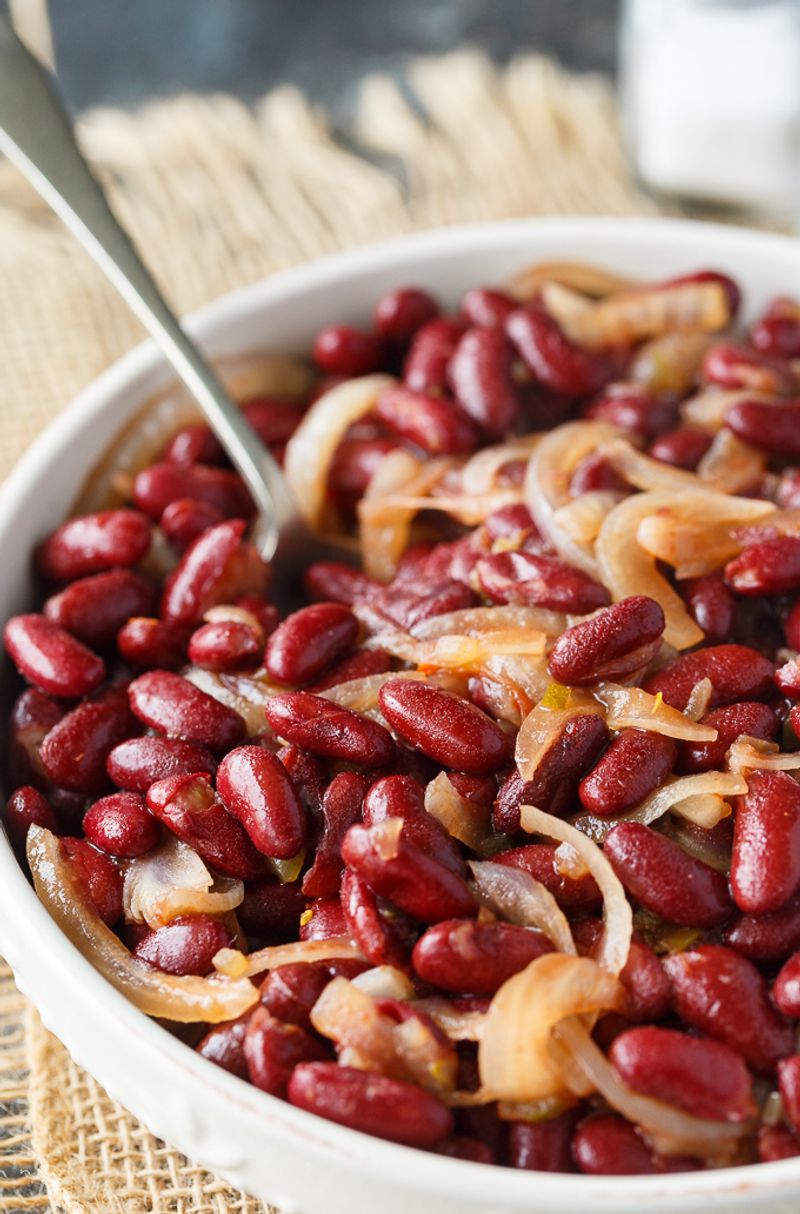
Named for their distinctive shape, kidney beans bring robust flavor and impressive staying power to your favorite comfort foods. Their firm texture holds up beautifully during long cooking times, making them perfect for slow cooker recipes.
The deep red color adds visual appeal to any dish. Beyond the classic chili con carne, these beans shine in minestrone soup, Louisiana red beans and rice, and hearty three-bean salads.
Kidney beans are particularly rich in antioxidants – those dark red skins contain anthocyanins that fight inflammation. Just remember they must be thoroughly heated, as raw kidney beans contain a toxin that cooking neutralizes.
3. Lima Beans
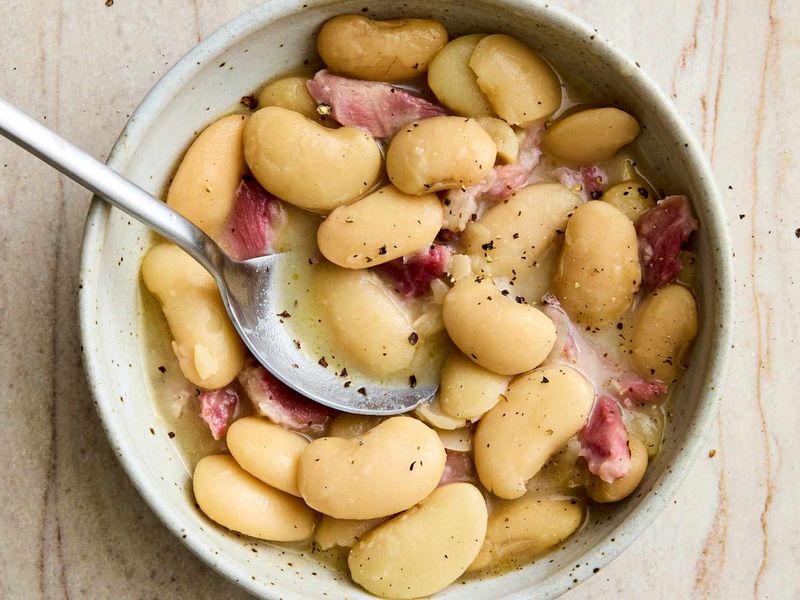
Often nicknamed “butter beans” for good reason, lima beans offer a creamy, starchy texture that feels luxurious on the tongue. Their mild, buttery flavor provides the perfect canvas for herbs and seasonings.
Southern cooks have long treasured these pale green gems in succotash and casseroles. Try them simmered with a ham hock or bacon for a soul-warming side dish, or purée them with olive oil and herbs for a unique dip.
Lima beans pack an impressive nutritional punch with potassium, magnesium, and iron. The large, flat beans also absorb flavors beautifully, making them ideal for soaking up broths and sauces in your favorite comfort food recipes.
4. Chickpeas
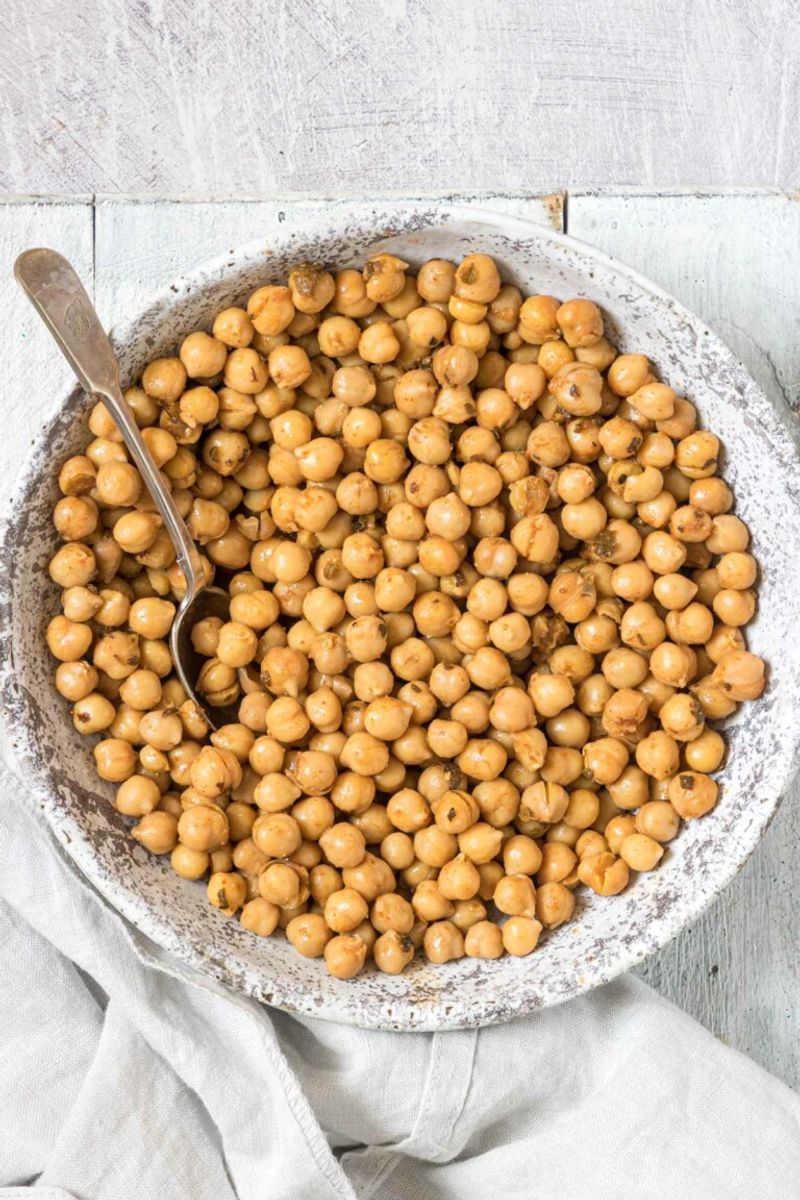
Round, nutty, and incredibly versatile, chickpeas might just be the hardest-working bean in your pantry. These beige beauties form the foundation of countless Mediterranean and Middle Eastern classics.
Hummus is just the beginning – roast drained chickpeas with spices for a crunchy snack, or toss them into curries, stews, and salads for instant protein. Their firm texture holds up well in cooking, and they absorb flavors like little sponges.
The liquid from canned chickpeas (aquafaba) has become a culinary sensation as an egg white substitute. Whip it to create vegan meringues or use it to bind veggie burgers. Talk about zero waste!
5. Cannellini Beans
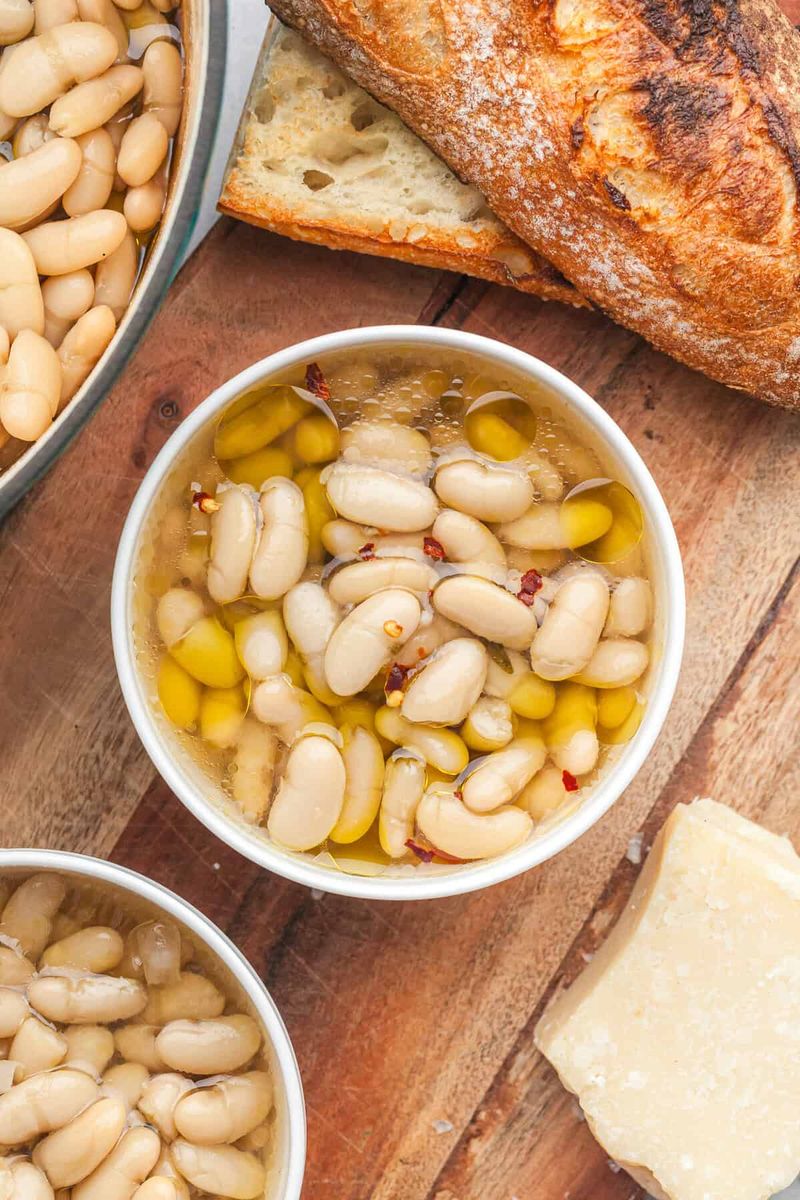
Silky smooth with a mild, nutty flavor, cannellini beans bring refined elegance to everyday meals. These large white kidney beans are staples in Italian cuisine for good reason – they’re simply magnificent.
Toss them into minestrone soup or pasta e fagioli for authentic Tuscan flair. Their creamy texture makes them perfect for mashing into dips or spreading on crostini with olive oil and herbs.
Unlike some beans that demand bold seasonings, cannellini beans shine with minimal enhancement – a splash of good olive oil, fresh herbs, and a squeeze of lemon can transform them into a sophisticated side dish. Their delicate skins and tender interiors offer textural perfection in countless applications.
6. Black-Eyed Peas
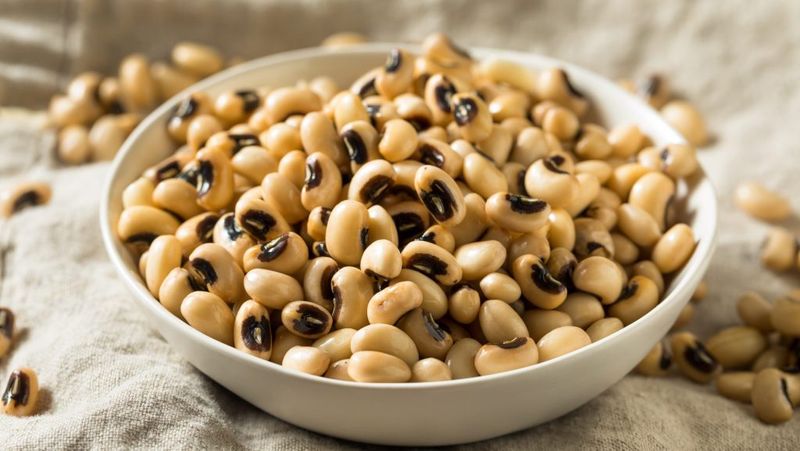
These cream-colored beans with distinctive black “eyes” carry both flavor and tradition in their tiny packages. Southern tradition holds that eating black-eyed peas on New Year’s Day brings good luck – but they’re too delicious to save for just one day a year!
Hoppin’ John, a classic rice and pea dish, showcases their earthy flavor beautifully. Their slightly sweet, nutty taste pairs wonderfully with smoky ham hocks or bacon, though they’re equally delicious in vegetarian preparations.
Nutritionally, black-eyed peas are folate superstars, providing this important B vitamin that supports heart health. Their firm texture holds up well in salads and casseroles without turning mushy – a definite plus in the canned bean world.
7. Great Northern Beans
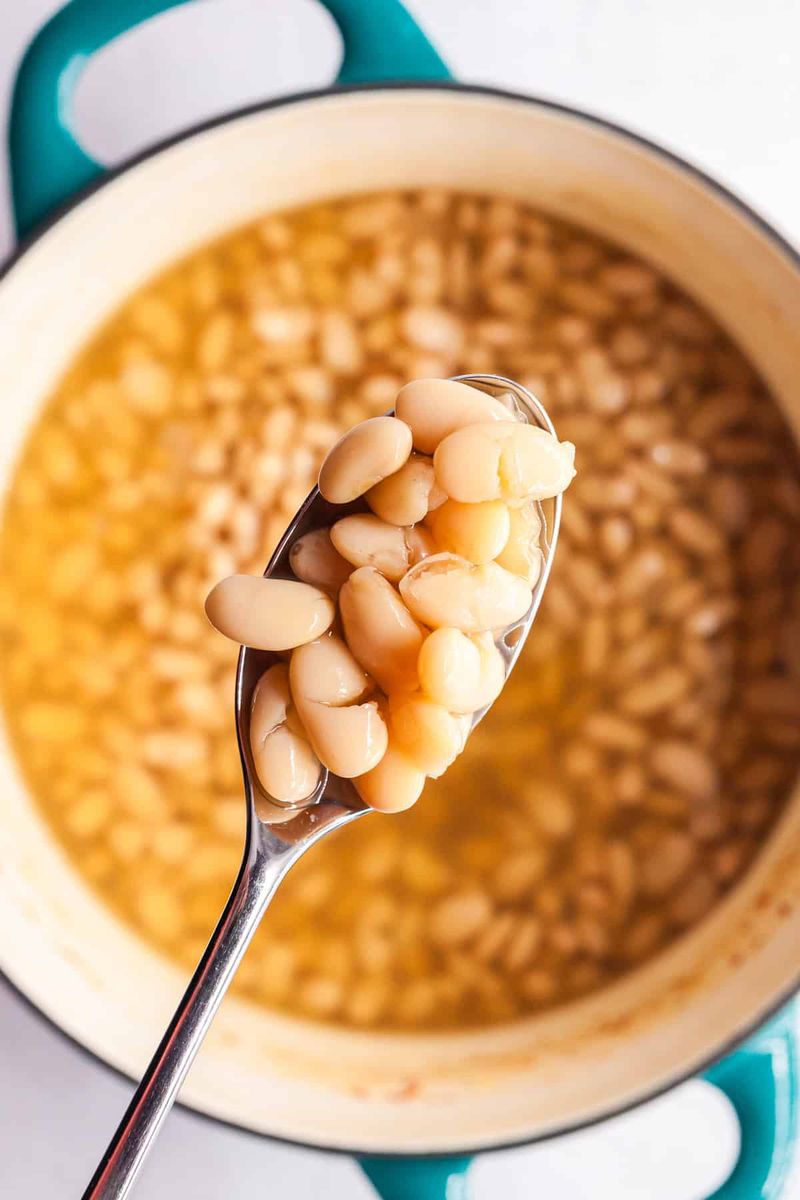
Larger than navy beans but smaller than cannellini, Great Northern beans occupy the Goldilocks zone of white beans – just right for countless applications. Their mild flavor absorbs surrounding ingredients while maintaining their shape beautifully.
These beans were pioneers’ favorites for good reason – they’re perfect for slow-cooked soups, stews, and casseroles. Their delicate flavor complements rather than overwhelms other ingredients, making them incredibly versatile kitchen workhorses.
For a quick weeknight dinner, sauté them with garlic, olive oil, and fresh herbs. Or blend them into creamy dips and spreads. Their relatively thin skins and tender interiors provide pleasing texture without the mushiness that plagues some canned varieties.
1. Baked Beans

The nostalgic aroma of baked beans might trigger fond memories of backyard barbecues, but most commercial varieties hide a nutritional downside. A quick label check reveals the uncomfortable truth: many brands pack more sugar per serving than a chocolate chip cookie!
That sweet tomato sauce often contains high fructose corn syrup, molasses, brown sugar, or all three. Add concerning sodium levels – sometimes exceeding 500mg per serving – and these convenient beans become less appealing.
If you can’t resist their saucy allure, look for reduced-sugar and low-sodium versions, or make your own starting with navy beans. Your taste buds will adjust to less sweetness, and your body will thank you for avoiding this processed food pitfall.
2. Canned Green Beans
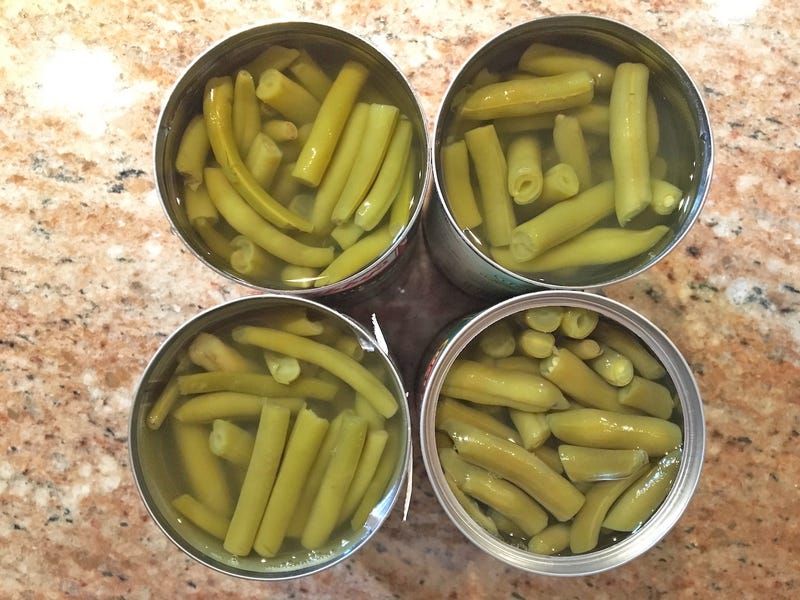
Fresh green beans snap with crisp texture and vibrant flavor, but their canned counterparts tell a sadder story. The canning process transforms these once-perky vegetables into pale, mushy shadows of their former selves.
That characteristic squeaky-clean bite? Gone. The bright, grassy flavor? Replaced by a tinny, waterlogged blandness that no amount of seasoning can fully rescue. For quick veggie sides, frozen green beans maintain far superior texture and nutrition.
If you must use canned, they’re passable in casseroles where other ingredients mask their shortcomings. But for simple side dishes or salads, this is one canned item best left on the shelf in favor of fresh or frozen alternatives.
3. Bean Sprouts
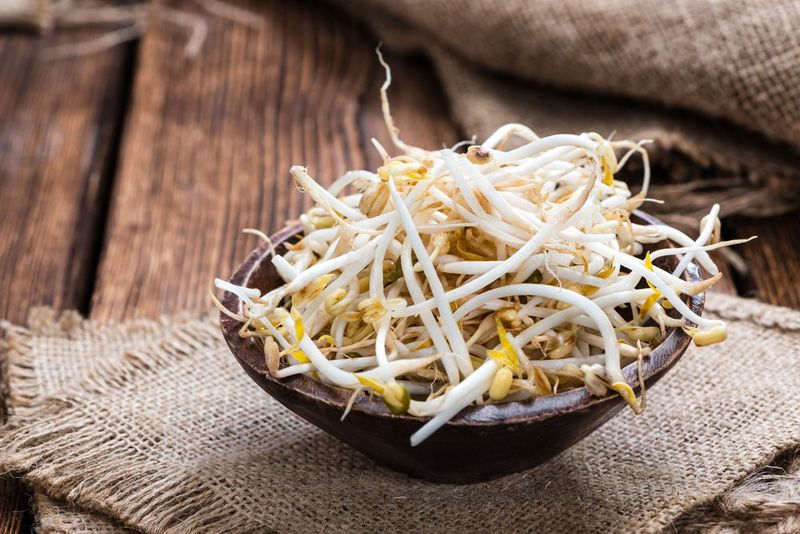
Fresh bean sprouts deliver delightful crunch in stir-fries and spring rolls, but the canned version commits a culinary crime against texture. The heat-intensive canning process transforms these once-crisp delights into sad, soggy strings.
Beyond texture issues, canned sprouts often develop an unpleasant metallic taste that overwhelms their naturally mild flavor. This tinny quality can taint entire dishes, especially in delicate preparations like Vietnamese pho or Chinese chow mein.
Fresh sprouts are inexpensive and widely available in produce sections, while some markets sell refrigerated sprouts with extended shelf life. Growing your own is surprisingly easy too – a jar, some seeds, and a few days yield garden-fresh sprouts without the metallic aftertaste.
4. Refried Beans
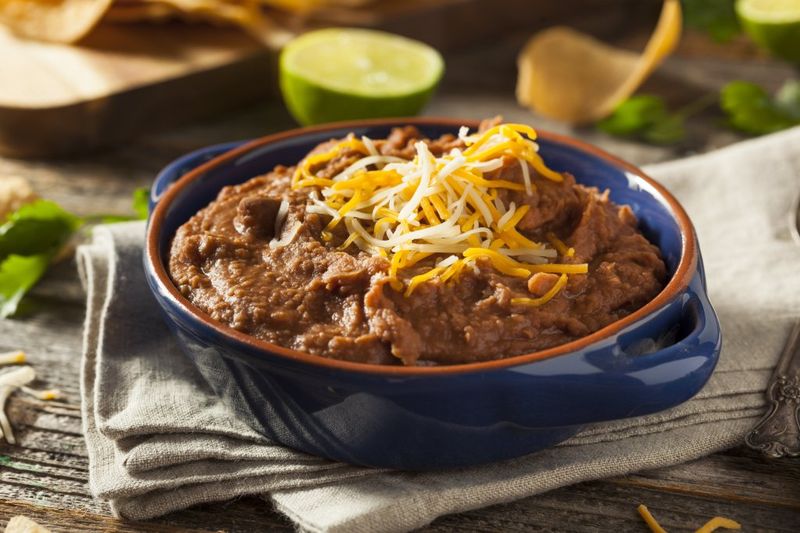
The convenience of opening a can of creamy refried beans for taco night seems appealing until you scan the ingredient list. Traditional recipes use lard or bacon fat for flavor, and many commercial brands follow suit with surprising amounts of added fats.
Sodium levels in these mashed beans often soar past 500mg per serving – nearly a quarter of your daily recommended limit in just one taco side! The texture can also disappoint, ranging from paste-like to oddly grainy.
When refried beans cravings strike, seek out vegetarian or fat-free versions with lower sodium content. Better yet, make your own by mashing pinto or black beans with minimal oil, fresh garlic, and spices – you’ll get fresher flavor with complete control over ingredients.
5. Canned Peas
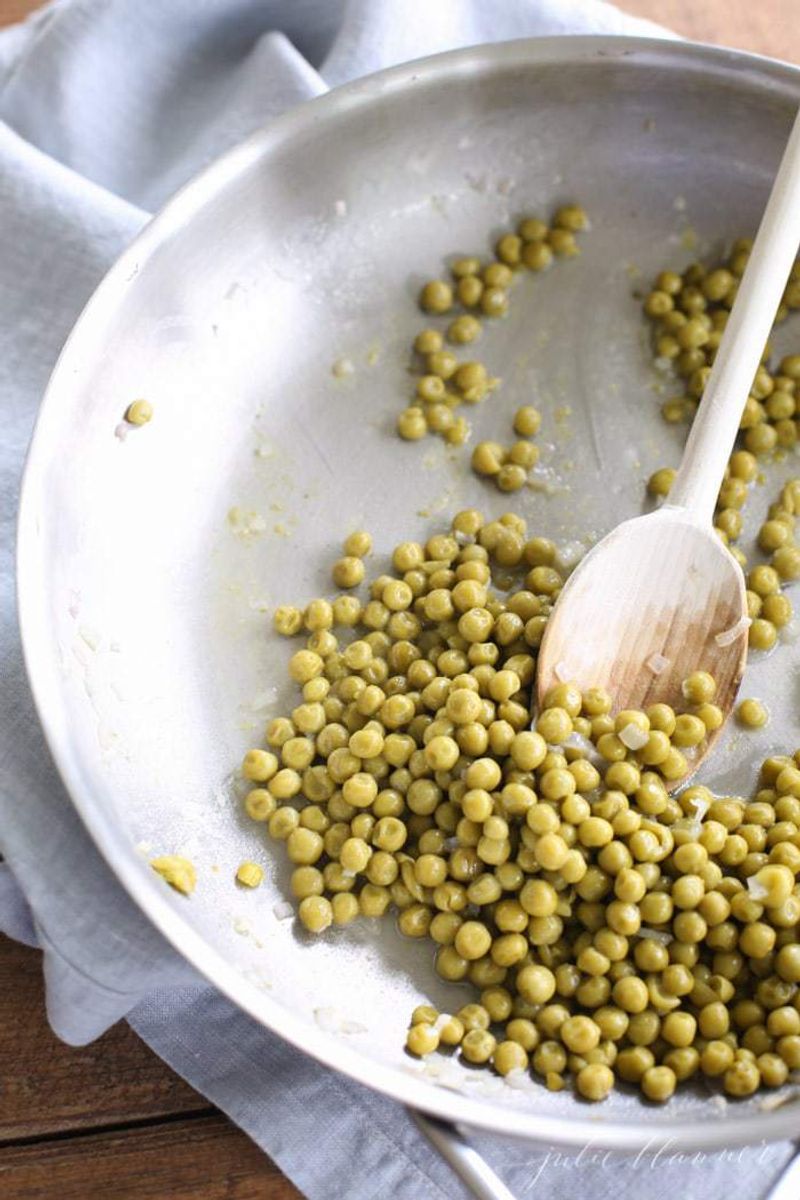
The vibrant sweetness of fresh or frozen peas vanishes in their canned counterparts. What remains is a dull army-green sphere with mushy texture and muted flavor that barely resembles the garden-fresh original.
The canning process breaks down the delicate cell walls that give peas their signature pop, resulting in soft, sometimes grainy texture. That bright, sweet flavor gets replaced by a flat, slightly metallic taste that even butter can’t fully rescue.
Frozen peas actually retain more nutrients than canned because they’re flash-frozen at peak ripeness. They maintain their color, flavor, and most importantly, that satisfying pop when you bite into them. Save your pantry space for beans that actually benefit from canning.
6. Three-Bean Salad
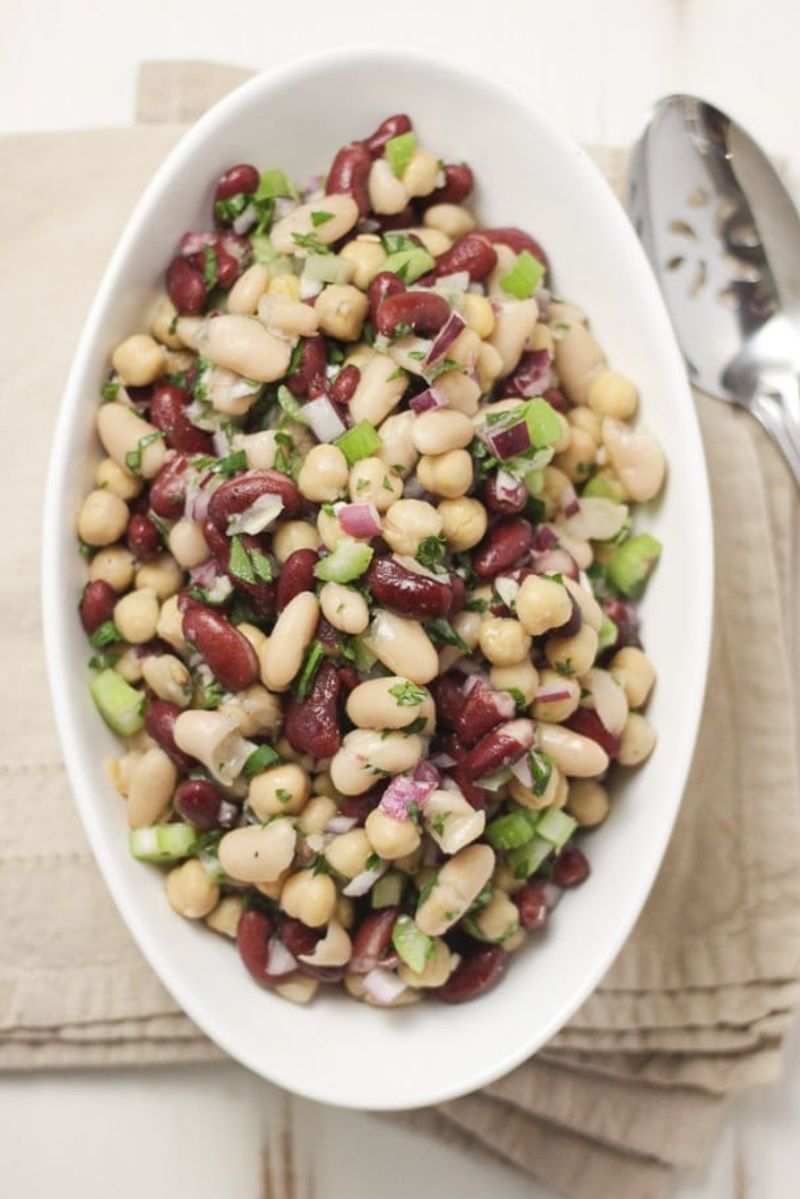
The concept seems wholesome – a ready-to-eat bean medley in tangy dressing. Unfortunately, most commercial three-bean salads swim in sugar-laden vinaigrette that transforms a potentially healthy dish into dessert territory.
A typical 1/2 cup serving packs 4-5 teaspoons of added sugar – as much as some cookies! The beans themselves often include wax beans and kidney beans that have been pre-softened to the point of mushiness, creating an unpleasant texture contrast with the crisp green beans.
Making your own three-bean salad takes minutes using canned beans of your choice, fresh vegetables, and a simple vinaigrette. You’ll cut sugar dramatically while creating a fresher, more vibrant side dish that actually showcases the beans’ natural flavors and textures.
Leave a comment